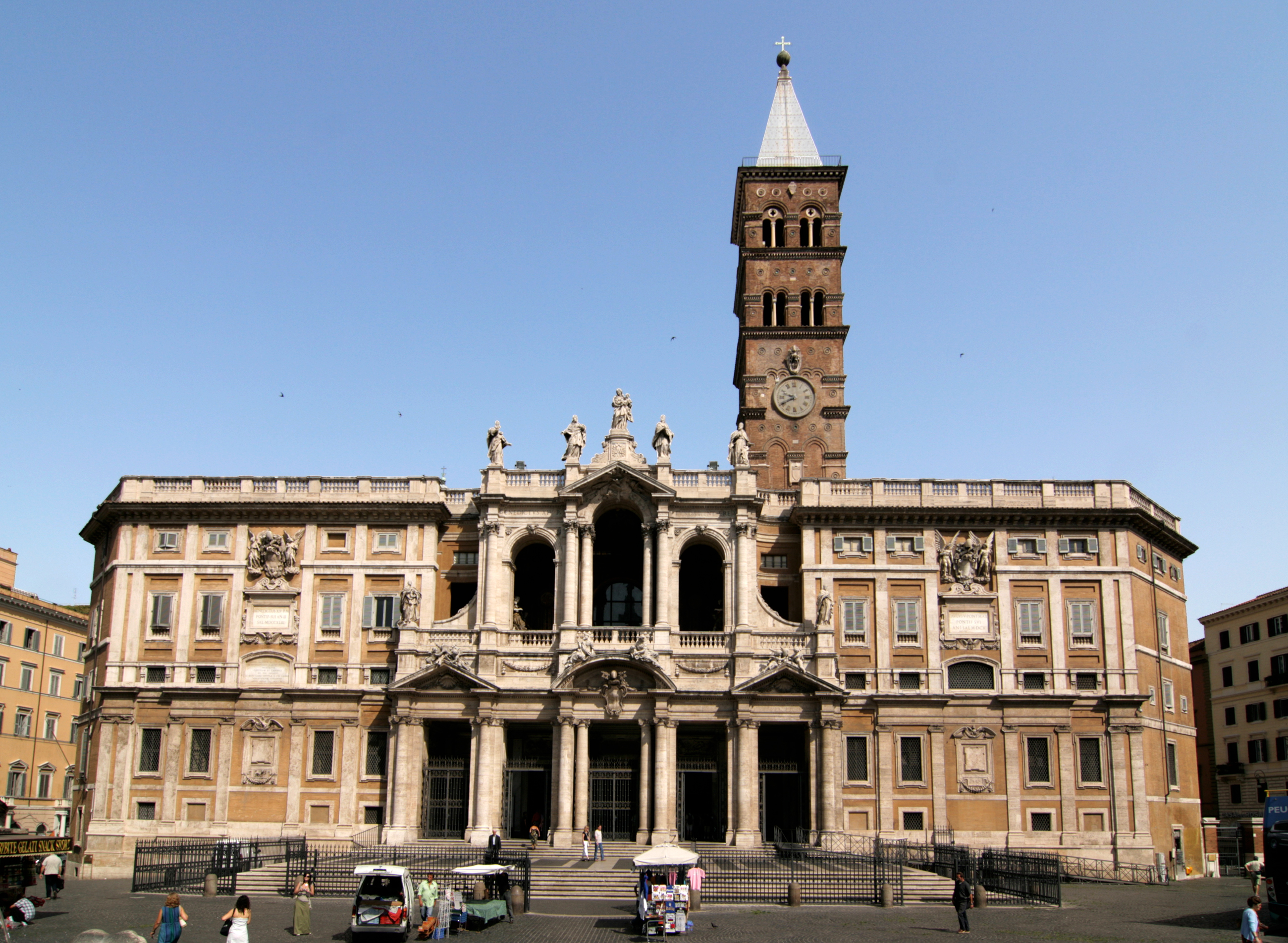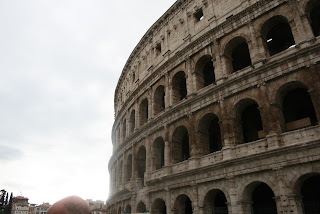Our room was a mess before they got to Prato, but we pulled off the magic trick of a spotless hotel room to greet them as they got off the train. We had been at Tina and Marco's house making authentic Italian food to welcome her family. Lianne's mom and sister flew in from Atlanta from Sunday and they were beyond jet lagged. Her sister knocked out as soon as we got back to the hotels. We walked around the market in the square with her mom and showed her around Prato during Italian siesta hours. There is a store about two blocks outside the walls called Angel Market that could be considered a giant Walmart with no food. We took our time laughing through the different aisles but the funniest would have to be a pair of underwear with a zipper section in the front. Don't ask us why. After the market we went back to the hotel and picked up Dana who was finally rested. The rest of the night was spent walking around and talking about the history of Prato and finally going to Francescaioli's for dinner (which they loved). They got an apartment around 10 minutes drive (or 40 minute walk) from the hotel and it was beautiful. It had blue walls with white furniture and accents. The only problem was that the oven wasn't working because it was never hooked up.
The next two days were spent roaming around Florence like pros and meeting up with my father who came a day later. The first Florence trip was funny because we had to figure out how to get to Florence by bus. We meant to get on a bus that went to Prato Centrale and then to Florence station but ended up accidentally getting on the express bus straight to Florence. The man was really nice. He didn't want to charge us. We walked around the city, telling them more history and stopped to eat at Buca Nicollini and got great gelato from a fantastic Italian man down the street from the Duomo. The next day all of us took the train to meet my dad in Florence and bought tickets to go see the David.
It is something that you never thought you could experience or could be possible and then you actually witness it. For one man to have the ability to create such a detailed sculpture of a man. It was simply incredible. Once again, we went to Buca Nicollini, but this time was different because they actually had the cheesecake we'd been waiting for. It was DELICIOUS.
Thanksgiving came up on us really quickly. Everybody got all dressed up to go to dinner which was really lunch. What dinner is at 2 pm? It was being catered by Mokha, who put in a lot of effort to try and make it seem like an American style Thanksgiving and we really appreciated that. We are both Jamaican so our Thanksgiving dinners go a little different than American style but it was nice to have family around while you eat a meal, regardless of where you are and who cooked it.
After Mokha, we toured Prato for the third time because everyone was finally together. We waited at the hotel so that the family could see Tina and Marco again and we could go out drinking with the guys and Dana. It was a wild night to say the least.
Friday was the one time that the taxi took half an hour so the Smiths ended up being late to get on the bus. Both of our seating arrangements were less than ideal. It only took an hour and some change to get to Sienna though. When we got there it took about 20 minutes to get from the bus to inside the actual city. The first place that we visited was the Church of San Domenico. This is where the head and thumb of Saint Catherine are kept. The thumb is used for special blessings on the days of the horse races. The rest of the body excluding
 the foot (which is in Venice) is housed in the Church of Santa Maria Supra Minerva in Rome. During her lifetime, she was already dubbed a Saint because of the numerous miracles she had performed. She managed to become an adviser of other Saints and Popes. The inner chapels of the church's frescoes were done by a painter named Sodoma. Saint Catherine is one of the Patron Saints of Europe, as well as one of the first women to be a doctor of the church. Aside from the display of her head and thumb, there are 17 flags within the church that represent the contradas/neighborhoods that were created in the middle ages as battalions for the defense of the city. After the tour, we spent our free time taking in the views and eating at an local Italian restaurant. The drive back was way better. My family ended up leaving a day and a half early so we cleaned up their apartment and took a taxi in the morning. We've been sleeping ever since.
the foot (which is in Venice) is housed in the Church of Santa Maria Supra Minerva in Rome. During her lifetime, she was already dubbed a Saint because of the numerous miracles she had performed. She managed to become an adviser of other Saints and Popes. The inner chapels of the church's frescoes were done by a painter named Sodoma. Saint Catherine is one of the Patron Saints of Europe, as well as one of the first women to be a doctor of the church. Aside from the display of her head and thumb, there are 17 flags within the church that represent the contradas/neighborhoods that were created in the middle ages as battalions for the defense of the city. After the tour, we spent our free time taking in the views and eating at an local Italian restaurant. The drive back was way better. My family ended up leaving a day and a half early so we cleaned up their apartment and took a taxi in the morning. We've been sleeping ever since. Wish us luck, on our final days in this city as we begin to separate ourselves from the life we have adapted to, while at the same time trying to ace all possible finals.
Arrivederci




















































